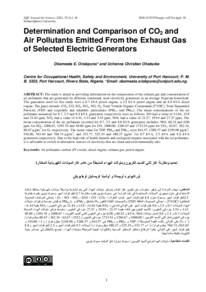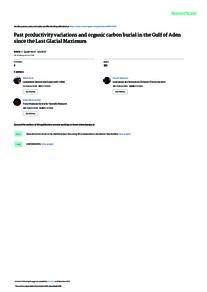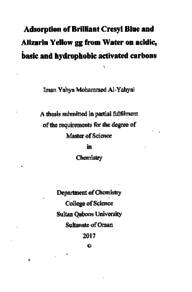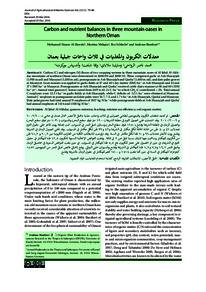Document
Tracing carbon : natural mineral carbonation and the incorporation of atmospheric vs. recycled CO2.
Identifier
DOI: 10.1016/j.egypro.2013.06.515
Contributors
Jenkin, G. R. T., Author
Styles, M. T., Author
Smith, D. J., Author
Naden, J., Author
Boyce, A. J., Author
Leng, M. J., Author
Millar, I. L., Author
Publisher
Elsevier.
Gregorian
2013-12
Language
English
English abstract
Mineral carbonation is a process whereby CO2 reacts with ultramafic rocks to form carbonate minerals such as calcite (CaCO3) and magnesite (MgCO3). This process can be induced artificially at high pressures and temperatures and therefore has potential to be adapted as a carbon capture and storage (CCS) technology. Large-scale surface and subsurface carbonate deposits of probable Quaternary age are associated with major faulting across the Oman-UAE ophiolite. Here, fractured rock forms a natural fluid pathway and increases the surface area available for carbonation. Modern springs along these faults typically discharge hyperalkaline (pH ~11), Ca(OH)2-rich waters that precipitate carbonates on reaction with atmospheric CO2. Carbonates formed by absorption of atmospheric CO2 into Ca(OH) 2 waters tend to display low δ13C (-20%o PDB) as a result of kinetic fractionation. However, ancient travertines show a large range in δ13C of-10.5 to -21.8%o PDB, produced by the mixing of the low δ13C end member with other carbon sources such as limestones or organic-derived soil bicarbonate. Strontium isotope ratios of samples indicate fluids that formed calcite and magnesite veins may have interacted with limestones around and beneath the ophiolite. These are a carbon source which can easily be reworked and incorporated into carbonate deposits elsewhere. Carbonate deposits may not be created solely from atmospheric CO 2, but instead represent a mixture of carbon sources. Failure to account for multiple carbon sources or recycled carbon may result in poor estimates of the rates and volumes of carbon that natural systems sequester. Further investigation is therefore necessary to determine how much of the carbon held within carbonate deposits has been incorporated from reworked sources.
Member of
ISSN
1876-6102
Resource URL
Category
Journal articles






